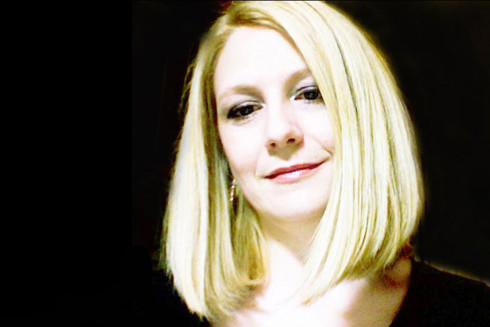Collage New Music serves up an engaging array of 21st-century works
If one needed to be reminded that a program of contemporary music can be engaging – even riveting – on its own terms, Collage New Music’s concert ’s Sunday night at Pickman Hall was the place to be.
One got to hear not just an all-21st-century-music program, full of Boston premieres (and one world premiere). But more, you could experience the wide stylistic and expressive diversity that marks the best music of our time.
Hannah Lash’s C began the proceedings.
A concise, spunky moto perpetuo for piano and vibraphone, this 2011 work has one foot firmly planted in the world of American minimalism: C’s outer parts are built around iterations of that pitch played in octaves. Gradually, more notes join the tonal array.
A subsequent section introduces scalar figures that are repeated and built upon in comparable additive fashion. Whimsical, dissonant episodes that wouldn’t be out of place in György Ligeti’s piano Etudes lead to a reprise of the beginning pulses and the piece eventually fades away.
Pianist Christopher Oldfather and vibraphonist Craig McNutt were partners in a performance that was rhythmically tactile and blazing with color.
Similar qualities marked CNM’s account of Laura Schwendinger’s High Wire Act. A 2005 quintet for flute, violin, viola, cello, and piano, High Wire Act takes Alexander Calder’s Cirque Calder as its point of departure. Accordingly, each of the work’s five movements corresponds to a character in Calder’s circus rendering.
The first, “High Wire Act,” depicts trapeze artists: an agile flute theme is countered by energetic piano figurations and a series of motives played in harmonics by the strings (which are meant to represent the trapeze itself). “Tightrope-Walker,” the second movement, is more static in character. The strings exchange sustained high notes that ultimately lead to a more active, lyrical section – but one that’s never too far removed from the opening, inert gestures.
The third and fourth movements, “The Aerialist” and “Trapped Bird,” respectively, bristle with activity. In the former, string arpeggios played in harmonics provide an alluring accompaniment to a sweeping flute/viola melody. And, in the latter, acrobatic flute writing is contrasted by brusque string trills and piano flourishes.
“Troupe Finale,” High Wire Act’s concluding movement, returns to the music of the first movement, now played a bit more confidently than at first – but still plenty choppy and punchy.
CNM music director David Hoose led a reading of High Wire Act that brimmed with personality. Sarah Brady’s realization of Schwendinger’s brilliant flute writing was particularly compelling: precise, nimble, and fiery.
Sean Shepherd’s Lumens filled out the concert’s first half. A 2005 meditation on gratitude, Lumens is, appropriately, a thoroughly gracious and genial piece. It features two main types of music: the first, based on a mellifluous tune that’s introduced at the beginning by the clarinet. The clarinet is interrupted but not thrown off by the second kind of music—a sequence of aggressively exuberant figures that, increasingly, take on a life and shape of their own.
Throughout Lumens, Shepherd’s writing is admirably refined and motivically tight. At the same time, this is a piece that isn’t afraid to show some heart: climaxes are sumptuous and the final bars radiant.
Sunday’s performance was warm and stylish. Clarinetist Gary Gorczcyca articulated his part with ruddy tone, while Shepherd’s striking instrumental ideas (like his writing for piccolo and cello) stood out boldly.
Ulam’s Spiral by CNM fellow Benjamin Park provided the night’s world premiere. A memorial to his former teacher, David MacBride (who introduced the composer to Staniswlaw Ulam’s eponymous mathematical theory), it’s an occasionally sober but often energetic homage to the late musician, scored for Pierrot ensemble (flute, clarinet, violin, cello, and piano) plus percussion.
The opening section, with its thudding low piano writing accompanied by bass drum and tam-tam, gives the piece a mournful, ritualistic quality. That aspect, though, is largely displaced by the faster, march-like section that follows soon after. Some reflective passages then occur, though Ulam’s Spiral maintains a sense of drive until the opening theme returns at the end.
On Sunday, Ulam’s Spiral provided an emotional anchor: conventional in form but affecting in content and, through its ten-minute duration, more than holding its own with the night’s other fare. Park’s writing is thoroughly engaging, marked by strong contrapuntal sensibilities and a good ear for sonority (his scoring for alto flute and bass clarinet, in particular, was spot-on).
David Rakowski’s Dream Logic rounded out the evening. The seven movements are largely playful: sometimes jazzy (as in the fourth movement’s evocations of Dave Brubeck and Lee Konitz), sometimes spare like Webern (the fifth movement’s delicate textures), or seeming to channel John Adams (the melodic writing in the second and sixth movements).
Rakowski’s scoring was the night’s most venturesome, with Dream Logic calling for toy piano and two melodicas (one played by pianist Oldfather, another by percussionist McNutt), in addition to requiring some extended woodwind techniques. Rakowski’s music entertains more than it provokes, though some sinewy moments suggest shadows just out of sight.
Sunday’s reading nicely captured Dream Logic’s colors and vigorous, occasionally goofy, charms, from the visceral, jerky fragments of the first movement to the clanking toy piano in the sixth. Clarinetist Gorczcyca imbued the finale’s bluesy bass clarinet writing with soul.
Collage New Music performs music by Yu-Hui Chang, Richard Festinger, Eric Moe, and Andrew Imbrie 8 p.m. March 21 at Pickman Hall. collagenewmusic.org
Posted in Performances




